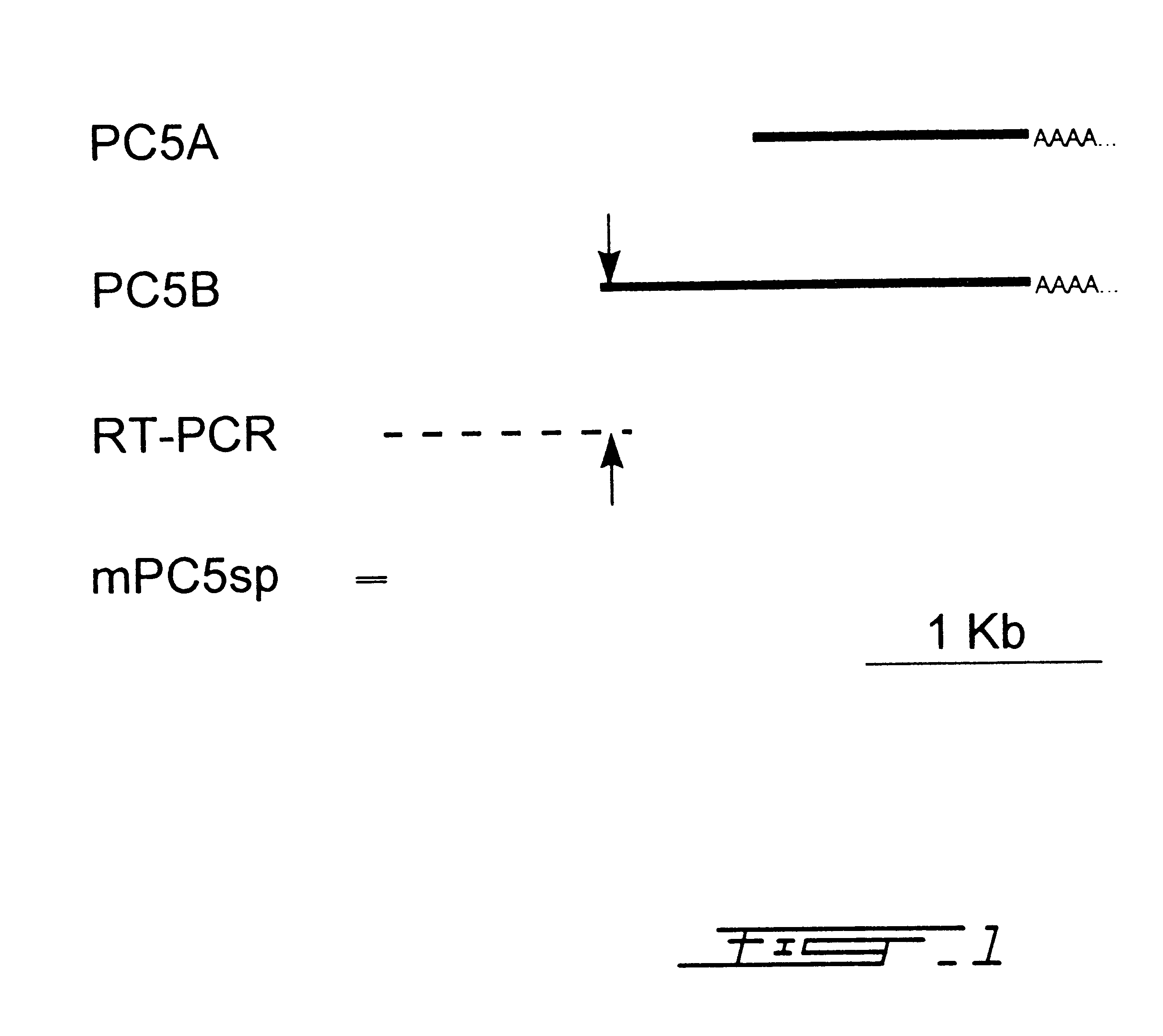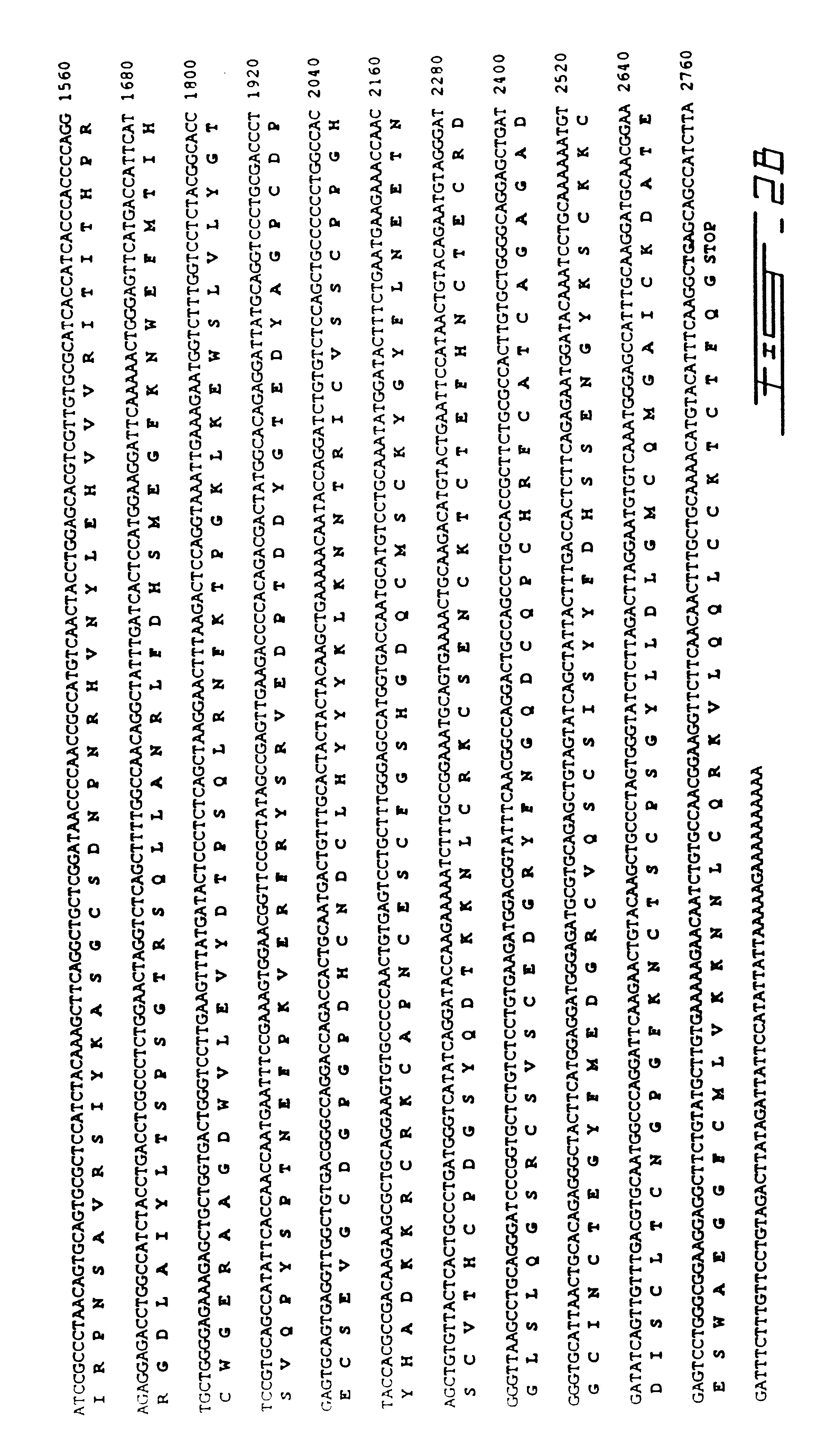Pro-protein converting enzyme
a technology of pro-protein converting enzyme and hpc5, which is applied in the field of human pc5, can solve the problems of affecting cell proliferation through deficient growth factor activation, manipulating the expression of pcs, etc., and achieves the effect of suppressing the expression of hpc5, inhibiting carotid stenosis, and preventing restnosis
- Summary
- Abstract
- Description
- Claims
- Application Information
AI Technical Summary
Benefits of technology
Problems solved by technology
Method used
Image
Examples
Embodiment Construction
Materials and Methods
cDNA library construction and screening: A cDNA library derived from total human adrenal RNA was constructed by Stratagene (La Jolla, Calif.) in the phage vector Uni-Zap XR. Six hundred thousand phage plaques were screened initially using radioactive probes and standard methodologies..sup.14 The initial hybridization probe was a 320 base pair DNA fragment derived from reverse-transcriptase PCR of human brain RNA using information derived from an unidentified human CDNA sequence tag in Genbank (Accession # M85522) with a high degree of similarity to the previously cloned mouse PCS..sup.15 Fragment labeling was carried out using .sup.32 p dCTP and a random primer labeling kit (Boehringer-Mannheim Canada, Laval, Quebec, Canada) according to manufacturer's instructions. One positive hybridizing phage (hPC5A) was identified. Its insert was sequenced in its entirety using the dideoxy-chain termination method and found to code for an 1150 base pair CDNA with a high deg...
PUM
| Property | Measurement | Unit |
|---|---|---|
| Antisense | aaaaa | aaaaa |
Abstract
Description
Claims
Application Information
 Login to View More
Login to View More - R&D
- Intellectual Property
- Life Sciences
- Materials
- Tech Scout
- Unparalleled Data Quality
- Higher Quality Content
- 60% Fewer Hallucinations
Browse by: Latest US Patents, China's latest patents, Technical Efficacy Thesaurus, Application Domain, Technology Topic, Popular Technical Reports.
© 2025 PatSnap. All rights reserved.Legal|Privacy policy|Modern Slavery Act Transparency Statement|Sitemap|About US| Contact US: help@patsnap.com



